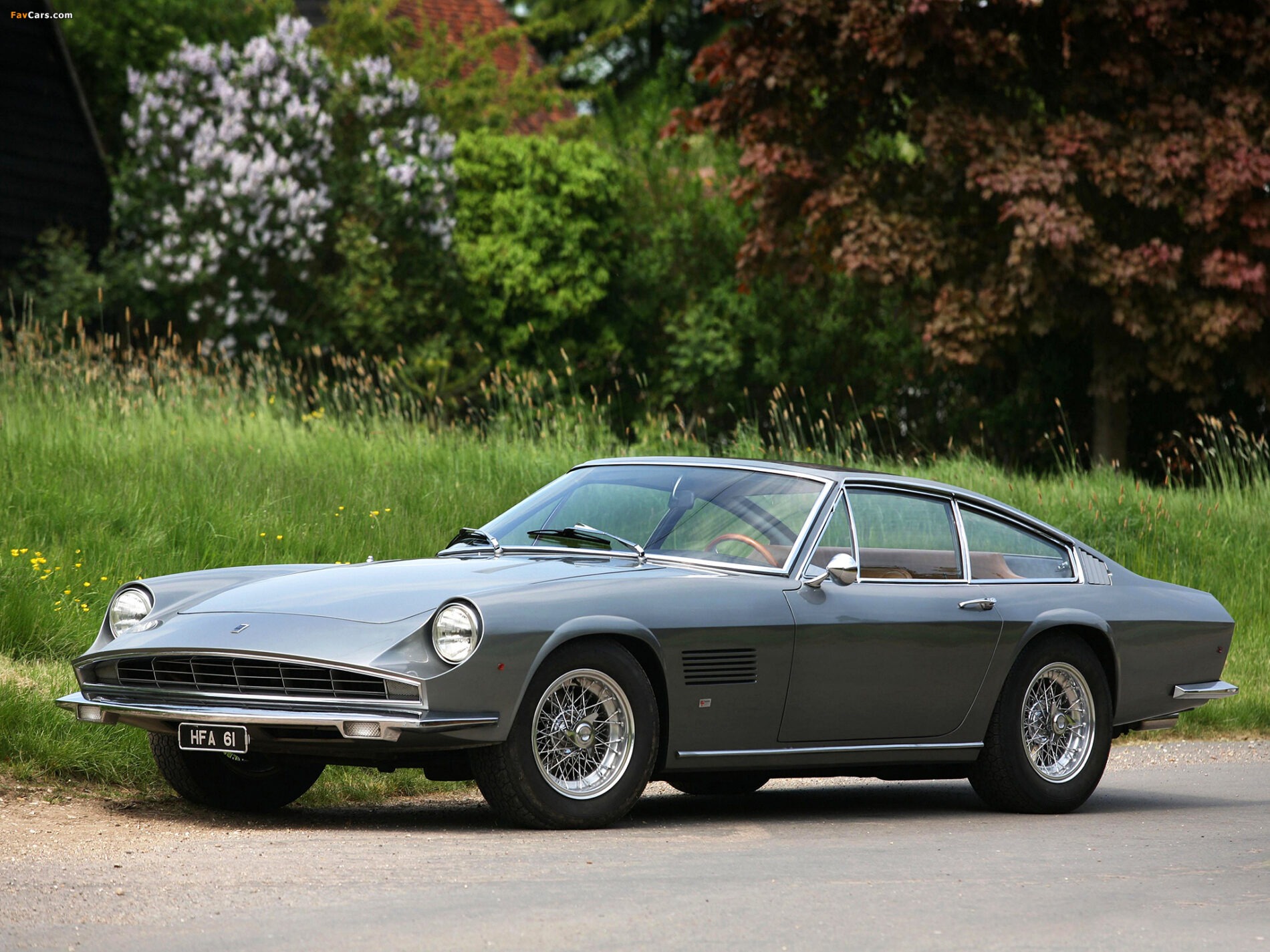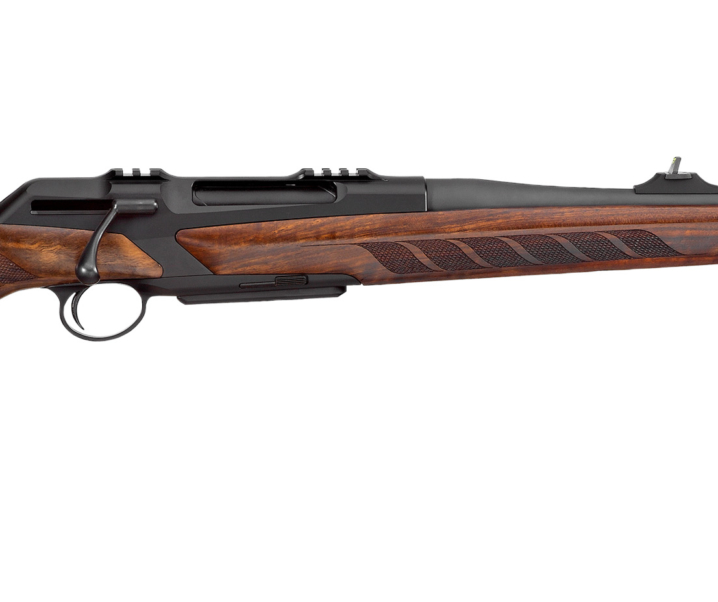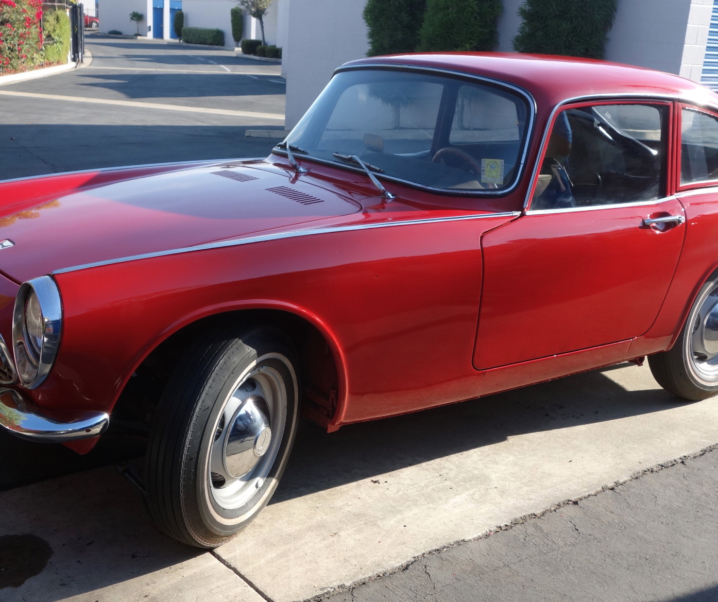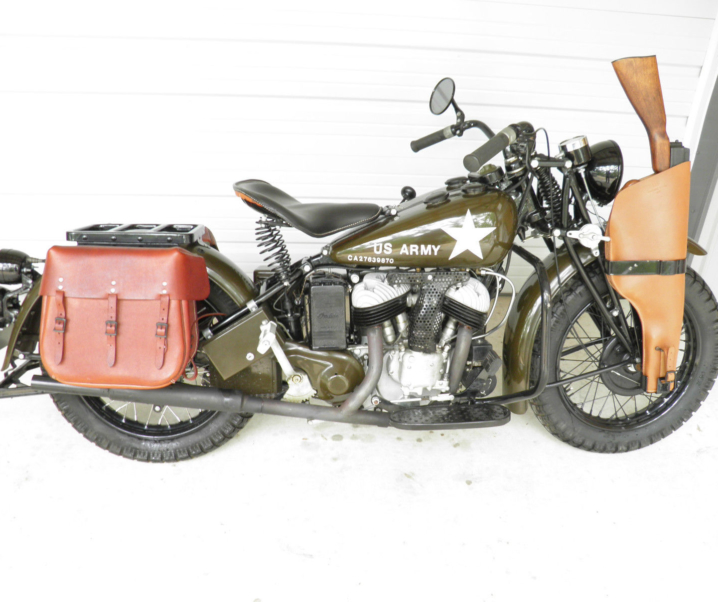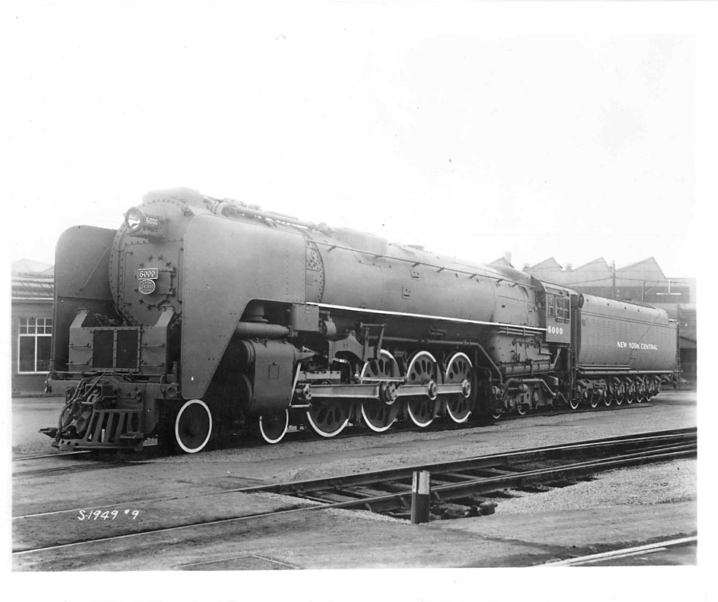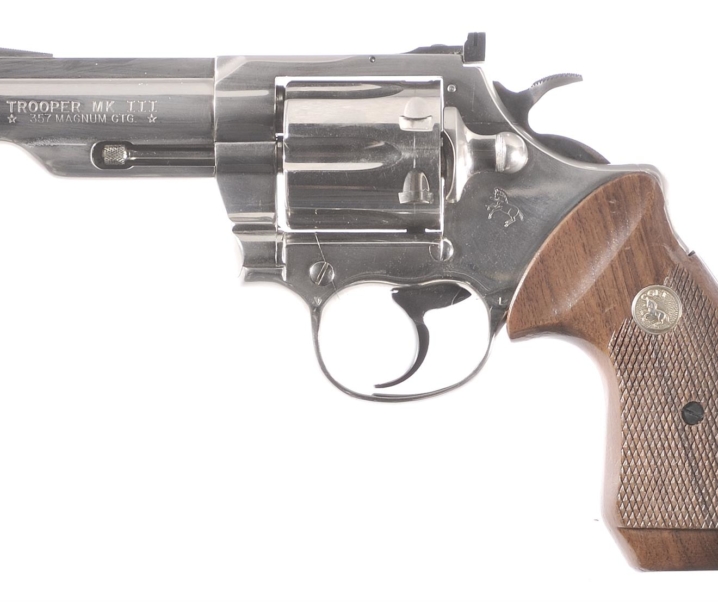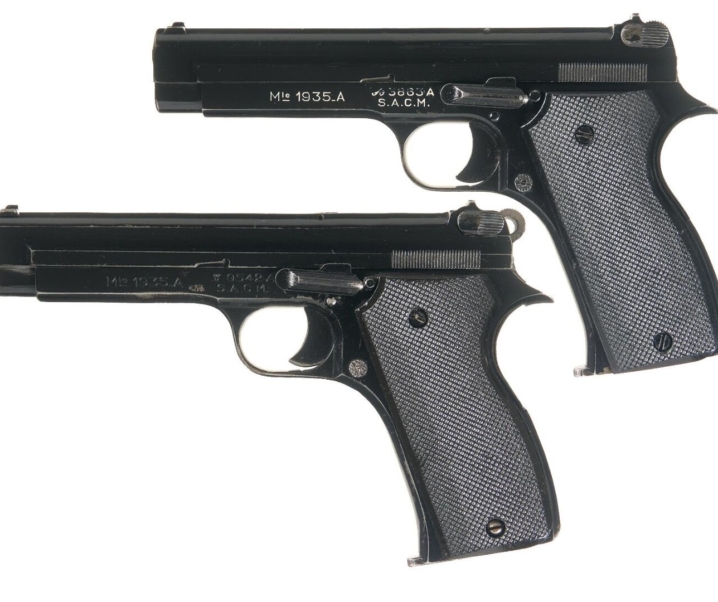Peter Monteverdi proved himself to be a quiet achiever. He was a pioneer of the luxury four wheel drive concept, racing car maker, racing driver, and the man who created the rare and utterly beautiful Monteverdi High Speed series of luxury high-performance Grand Touring cars.
The Monteverdi High Speed remain today as Switzerland’s iconic performance cars, rare and highly desirable.
Fast Facts
- Peter Monteverdi was a performance car enthusiast from his childhood, a childhood that was blessed by his being born into a family which was in the car business.
- The first Monteverdi was a car hand built in the back of his dad’s garage by an eighteen year old Peter using Fiat 1100 components. This was an indicator of Peter’s developing design and mechanical expertise, and of his conscientiousness.
- Peter Monteverdi took over his father’s business in 1956 and successfully developed it as an exotic car dealership.
- It is likely that Peter Monteverdi harbored an ambition to build his own series of luxury high performance cars that would be able to rival the likes of Ferrari. This ambition was fired into life when a disagreement with Ferrari led to the ending of his Ferrari dealership. So he set about designing and creating his High Speed 375 series of cars, a series that would be in production from 1967-1976.
In engineering motor cars there are those who value sophisticated and complex engineering, finicky and exotic engines combined with similarly complex chassis and suspension systems can tend to acquire a cachet because they are seen as being a cut above their competitors.
The downside of complex and exotic systems is of course that they are rather more difficult to maintain and repair: and if the vehicle is a limited production item then the spare parts bin is going to get depleted and the search for parts made of “unobtainium” can become filled with frustration.
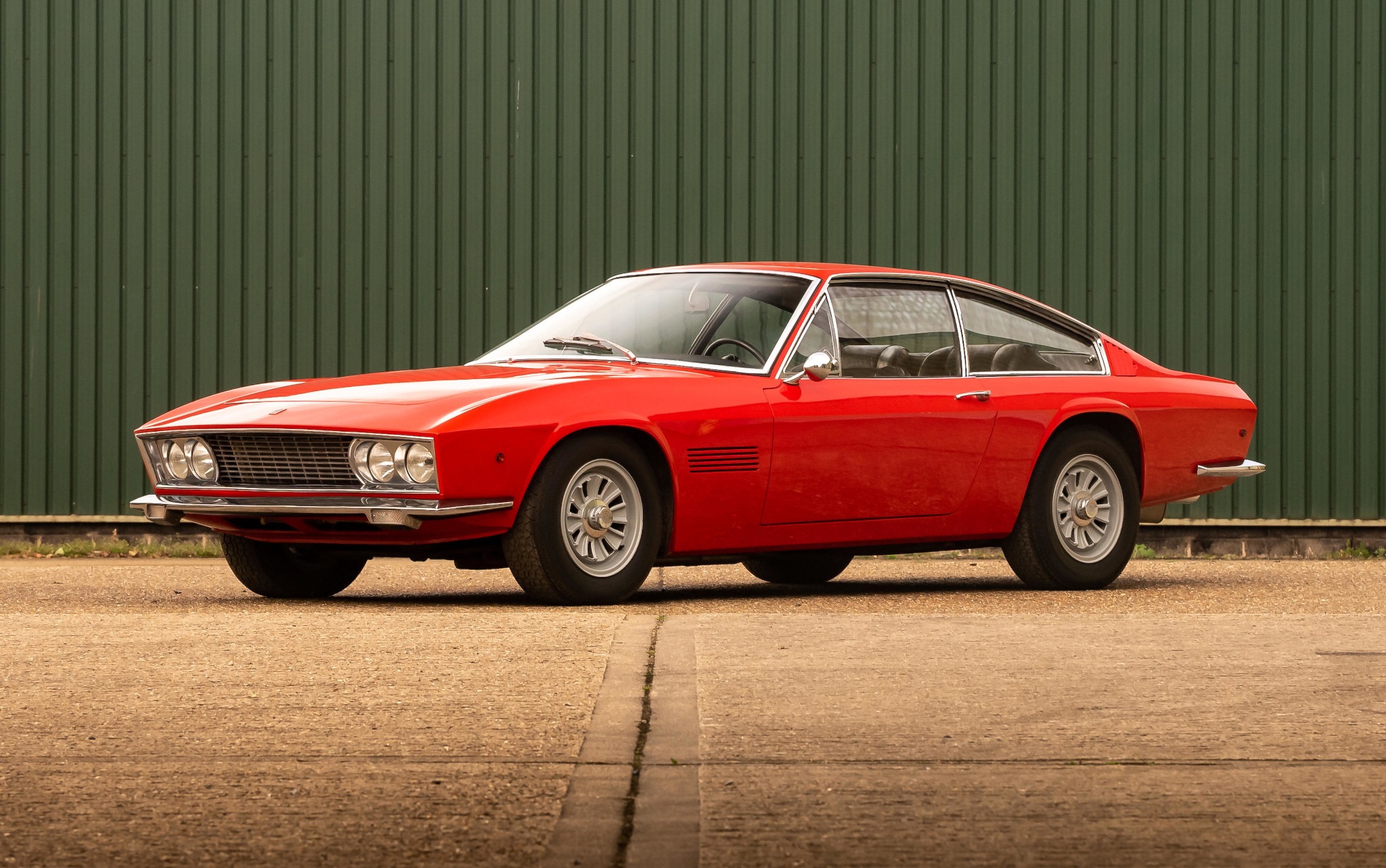
Small production car makers in Europe such as Ferrari, Maserati and Lamborghini have a history of creating cars replete with complex engineering and this has tended to make their cars items to be drooled over by enthusiasts and the motoring press.
There has been a different group of small production performance car makers who took an entirely different approach however. Their names are not so well known and yet the approach they took was arguably more sensible.
Facel Vega, Iso, Bizzarrini and Monteverdi are some of the luxury and performance car makers who took a “road less traveled” and built their automobiles using a mix of American engine and drive-train components blended with European chassis, suspension and steering, and French or Italian styling and coachwork.
The end results for these cars turned out to be some of the most desirable automobiles the world has ever seen, because this blending of technology used the best of American V8 power and combined it with the best of European chassis design and clothed the result in bodywork and interior that exemplified the best of European style.
These cars managed to compete on a par with their more complex siblings, but had the great advantage of being fitted with engines and transmissions that most mechanical workshops could maintain with ease.
Monteverdi: A Potted History
The founder of Monteverdi cars was Peter Monteverdi (who’s family lineage dates back to the composer Claudio Monteverdi). He was born in 1934 in the Swiss city of Basle, and like so many boys was bitten by the car-bug at an early age.
Young Peter had the advantage that his father owned a garage business and in 1952 in the back of that garage he was able to build his first car, a two-seater which was based on Fiat 1100 components, when he was eighteen years old.
Four years later in 1956 Peter inherited his father’s garage business and was able to indulge his passion for beautiful high performance cars: he became a dealer for Ferrari in 1957, and was able to add to his dealership Rolls-Royce, Bentley, BMW, Jensen and Lancia. This was wonderful for Peter Monteverdi but his addition of these prestige car marques soured his relationship with Enzo Ferrari.
In 1963 Ferrari insisted that Monteverdi pay in advance for a shipment of one hundred cars, something Peter Monteverdi refused to do, and so the business relationship between them was ended.
Thus it was that Peter Monteverdi joined the ranks of people who had broken off with Ferrari, a group that included Ferruccio Lamborghini and Giotto Bizzarinni among quite a number of others.
Monteverdi had acquired significant knowledge about high performance cars through his motor racing background and his dealership: and he also had an established contact network, and these things combined into a realistic expectation that he could create his own cars that would offer the luxury and performance of the best that Europe could offer, and equipped with American horsepower muscle, cars that could match Ferrari’s offerings – and cars that would have perhaps even greater appeal for American customers.
The die was cast, the bullet was bitten, and Peter Monteverdi began his venture into the car manufacturing business.
The Frua Series Models
Peter Monteverdi’s initial vision was to produce luxurious GT cars in very limited numbers, his initial plan was for about twenty cars per year. This would be an achievable number and would ensure the rarity and exclusivity of the marque.
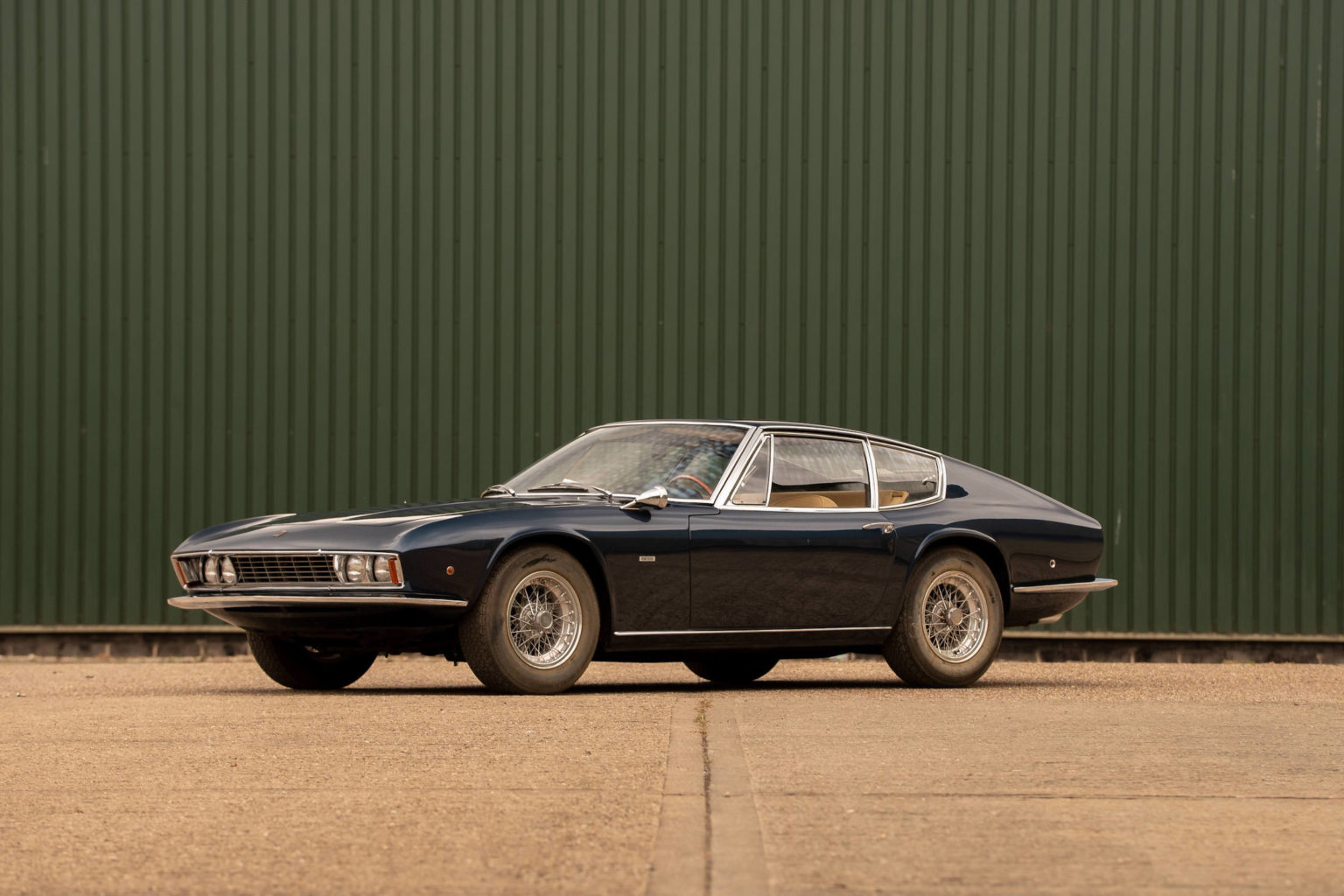
Peter Monteverdi began by designing the chassis for his new car. His design used rectangular section tubular steel for the chassis and had a tubular steel frame onto which the body panels were to be attached. It was fitted with suspension parts made by Alford & Adler in Britain with a German ZF steering system.
The car was to have disc brakes all around – these coming from Girling.
Monteverdi chose to have the chassis of the car made in Switzerland by Stahlbau AG in Muttenz in the canton of Basel-Landschaft. No doubt this was done both to ensure the highest quality of the foundation of the car, and also to cement its claim to be a Swiss luxury Grand Touring car: this of itself making the car a unique animal indeed.
Into this Swiss designed and manufactured chassis Monteverdi installed an American Chrysler V8 engine mated to either a four speed manual gearbox or, more commonly, a Chrysler TorqueFlite three speed automatic.
The drive was sent to a Salisbury differential to which was mounted in-board disc brakes much as was used with the Jaguar XKE, with a de Dion rear suspension system featuring coil springs and telescopic shock absorbers.
The front suspension was fully independent with upper and lower “A” arms, coil springs, and telescopic shock absorbers.
So, under the skin this was made to be a very conventional high performance car, easy to find spare parts for, and made to be as easy as possible to maintain.

Peter Monteverdi’s racing car design experience ensured he paid careful attention to weight distribution and to this end he mounted the V8 engine as far rearwards as he practically could to get as close as possible to a 50/50% front to rear weight distribution. To aid this the battery was also installed in the rear of the car, as was the spare wheel.
For the all important body and interior design Peter Monteverdi approached Italian designer Pietro Frua who was at that time at the peak of his illustrious career.
Pietro Frua had done the design for the Maserati Quattroporte which was shown in 1963, and the Maserati Mistral in 1965.
Frua had also created the AC 428 Frua Spyder in 1965 and the AC 428 Coupe in 1967.
Frua was able to do the design work for the new Monteverdi High Speed Grand Touring car and to make the coachwork at the production level Peter Monteverdi envisioned. So an agreement was reached and work on production began.
The chassis was made by Stahlbau AG and completed chassis were then sent to Monteverdi’s workshop where the engine and drive train were fitted. The rolling chassis was then sent to Frua’s workshop in Italy where the coachwork was created and fitted. Then the complete car was delivered back to Monteverdi for delivery to the customer.
High Speed 375 S
The Monteverdi High Speed 375 S was the first model to enter production and a total of about a dozen were completed in the first six months.
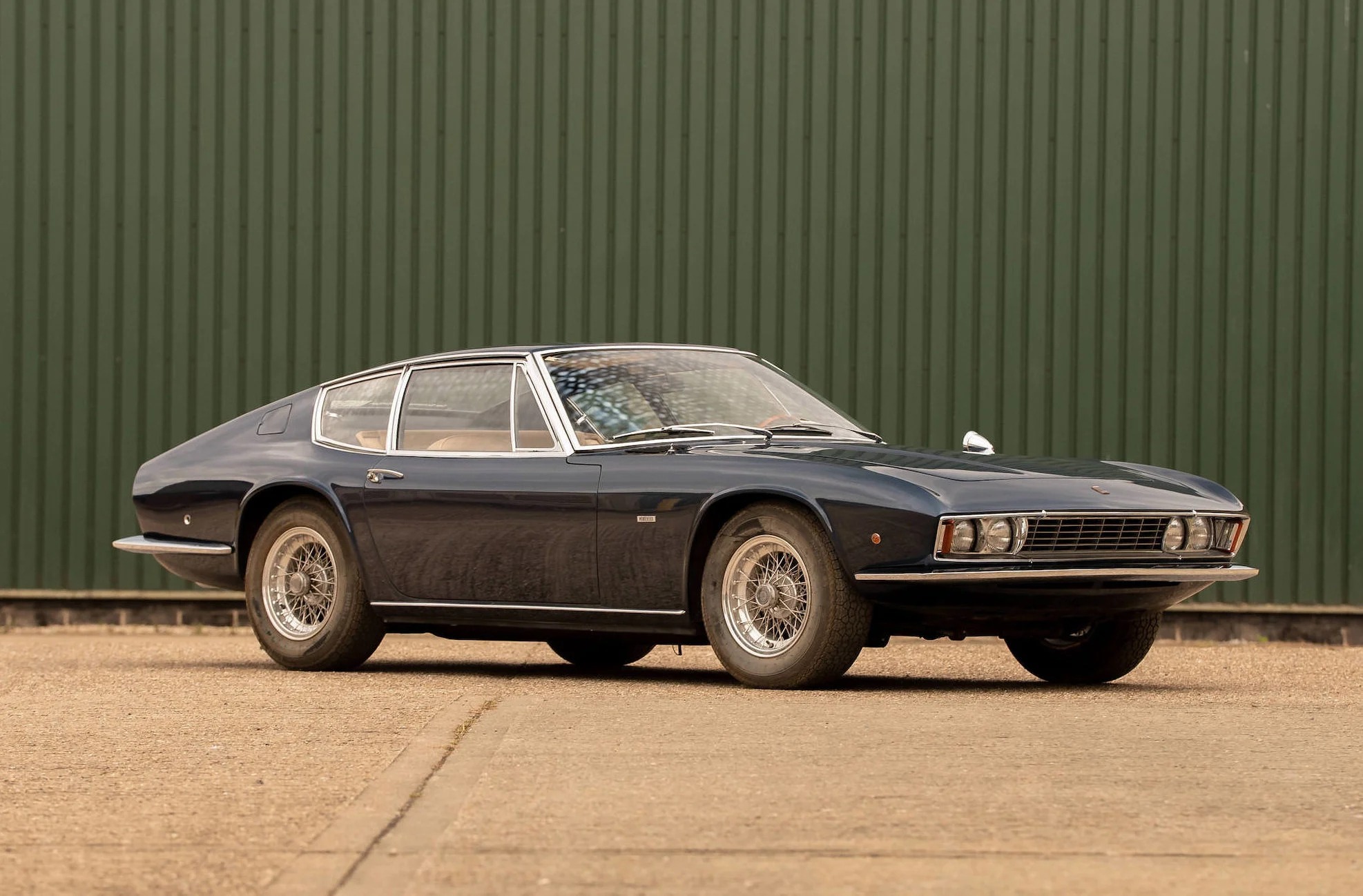
The High Speed 375 S was strictly a two-seat sports coupe and it was first shown at the 1967 International Motor Show in Frankfurt, Germany, and it attracted much positive attention. The performance, handling, and build quality were regarded as excellent.
This first Frua High Speed 375 S was powered by a 7.2 litre (440 cu. in.) Chrysler V8 engine which delivered 375 hp SAE. Monteverdi chose not to attempt to performance tune these engines regarding 375 hp as being entirely adequate. So these cars were smooth to drive yet satisfyingly powerful.
The modifications Monteverdi chose to do was limited to fitting a larger 7.0 litre oil pan and oil cooler, plus a transmission cooler for cars fitted with the Chrysler Torqueflite automatic.

High Speed 375 L
With his High Speed 375 S two-seater car in production Peter Monteverdi moved to create a 2+2 model, believing this may have even more customer appeal. The chassis of the High Speed 375 S was modified to incorporate space for an additional two rear seats.
Only one Frua prototype 2+2 was made and this car was never sold.
High Speed 400 S
Peter Monteverdi wanted to be able to offer his customers even more engine power than the already impressive High Speed 375 S was provided with: in short he wanted to offer 400 hp (SAE) all wrapped up in that svelte Swiss-Italian bodywork. This model however was never to proceed beyond the idea phase: it was announced, but did not materialize.
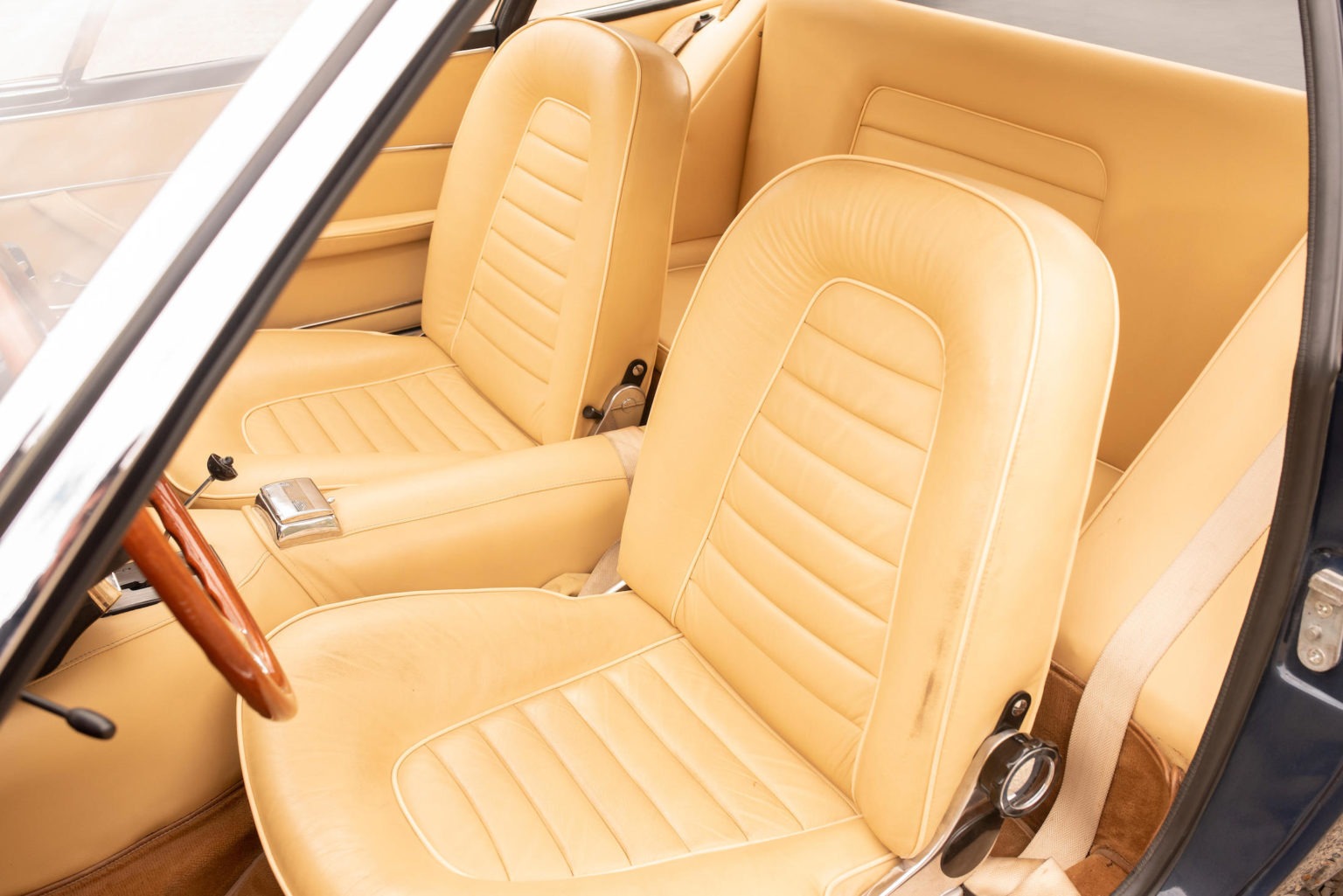
The reason for this was that Peter Monteverdi had decided that customer demand was well beyond his original conservative estimate of around twenty cars per year. As the inquiries and orders came in it became clear that a hundred cars per year would almost certainly be achievable.
There was however a downside that reared its head to obstruct Peter Monteverdi: Frua declared that they could not manage to produce a hundred cars per year. The Frua coachwork was entirely hand crafted.
So Peter Monteverdi would need to look somewhere else if he expected to pursue that objective.
The Fissore Models
Peter Monteverdi approached another coachbuilder, Fissore, and they stated that they could meet the one hundred cars per year production target. So Peter Monteverdi took the decision to transfer production to them.
This was not to be a simple changeover however. Frua were not willing to have Fissore build cars based on their design work without payment of royalties for their design: and when Peter Monteverdi sought to have Fissore create coachwork on the Frua design and refused to pay them royalties Frua took legal action, and prevailed.
In order to have Fissore build Monteverdi High Speed cars it was going to be necessary for them to create a design of their own, and build that.
Frua had no claim over the chassis or technical design of the High Speed 375 series of cars, only the coachwork, so the Monteverdi cars simply needed a styling change. This was a significant hurdle to overcome, but an achievable one.
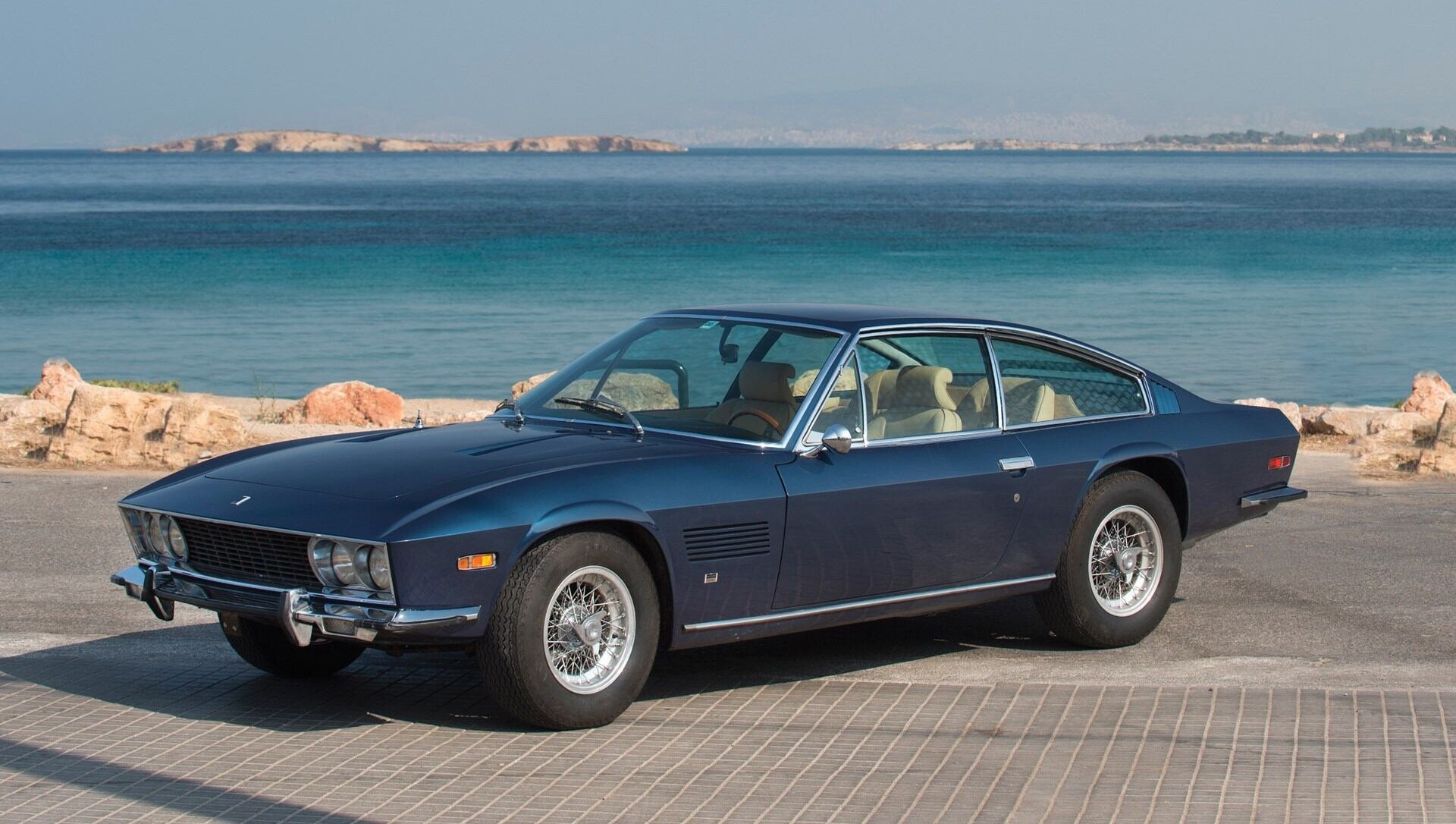
Before this disagreement had been created Frua had suggested that Monteverdi approach Carrozzeria Maggiora who had a more advanced mass production capacity, however, their mass production was going to require investment in custom tooling, such as the dies for use in the presses used to create body panels. Peter Monteverdi did not want to invest the large sum of money required to do that.
Fissore said they could create the required number of car bodies required using only hand production methods. So Monteverdi went for this rather less expensive and more hand-crafted option.
It is reported that the transfer from Frua to Fissore was not seamlessly accomplished and early production Fissore cars were said to have exhibited quality control issues. British magazine “Autocar” were provided with an early Fissore built 375 L in 1969 and found significant quality control issues with it. Their test car was chassis #012 and they surmised that it was likely one of the first dozen of the Fissore built cars.
These issues were resolved and Monteverdi were able to re-establish their high standard of quality control as befitted a car in its quite stratospheric price bracket.
“Autocar” found the car’s performance being well up to expectations however, the test car had a top speed of 152 mph and could accelerate from standing to 60 mph in 6.3 seconds and standing to 80 mph in 10.6 seconds.
Fuel consumption was 11.6 miles to the Imperial gallon (9.66 mpg US, 24.35 litres per 100 km). As one would expect of a car fitted with a 7.2 litre V8 she was a bit of a thirsty girl.
High Speed 375 L
As Monteverdi moved to higher volume production the primary High Speed model was to be the 375 L 2+2 coupé. The car was based on the original 375 L chassis as used for the Frua prototype.
The new bodywork created by Fissore did not depart greatly from the original Monteverdi design as done by Frua, but introduced subtle changes that set it apart as a new design.
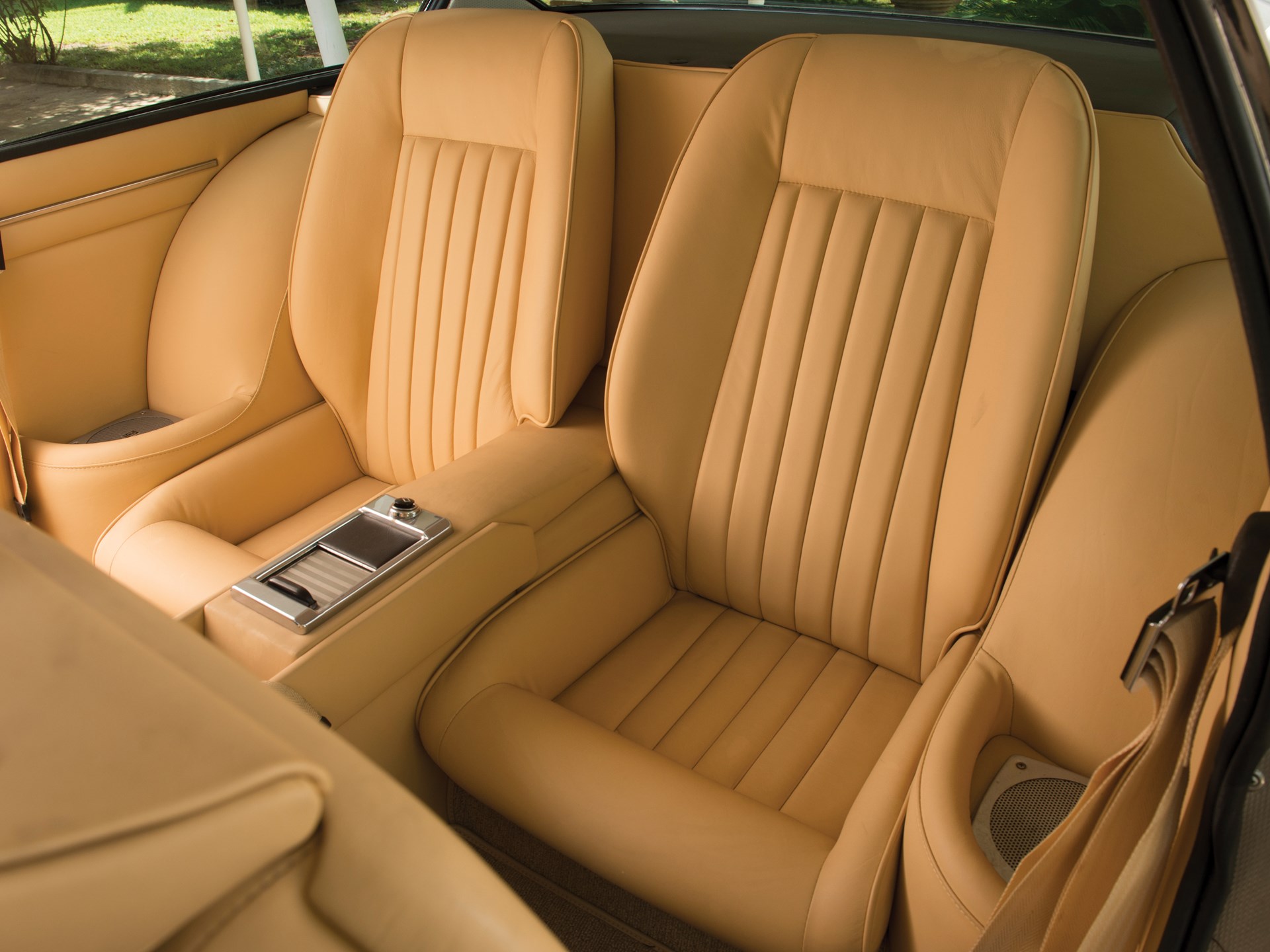
Peter Monteverdi claimed that he was the designer of the new bodywork, and this seems likely. He in all probability did sketches of what he wanted and Fissore’s design and drafting team then went ahead and produced the technical drawings for the construction of the coachwork.
Although the history is not documented it may well have been that Peter Monteverdi had previously provided Frua with sketches of what he wanted – or that he was consulted on the design and had significant input. In any event the Frua and Fissore cars exhibit a common design vision which might be taken as evidence of Peter Monteverdi’s concept input.
The High Speed 375 L was offered with the choice of two engine options: either the 7.2 litre Chrysler V8 producing 375 hp (SAE) or a slightly smaller but more powerful 7.0 litre Chrysler Hemi V8.
The Chrysler Hemi V8 was originally designed as a racing engine for NASCAR competition but Chrysler also made a “street” version which had a lower 10.25:1 compression ratio and which breathed through two four barrel in-line carburettors which were fitted with automatic choke.
This Hemi V8 produced 425 bhp @ 5,000 rpm with torque of 490 lb/ft @ 4,000 rpm.
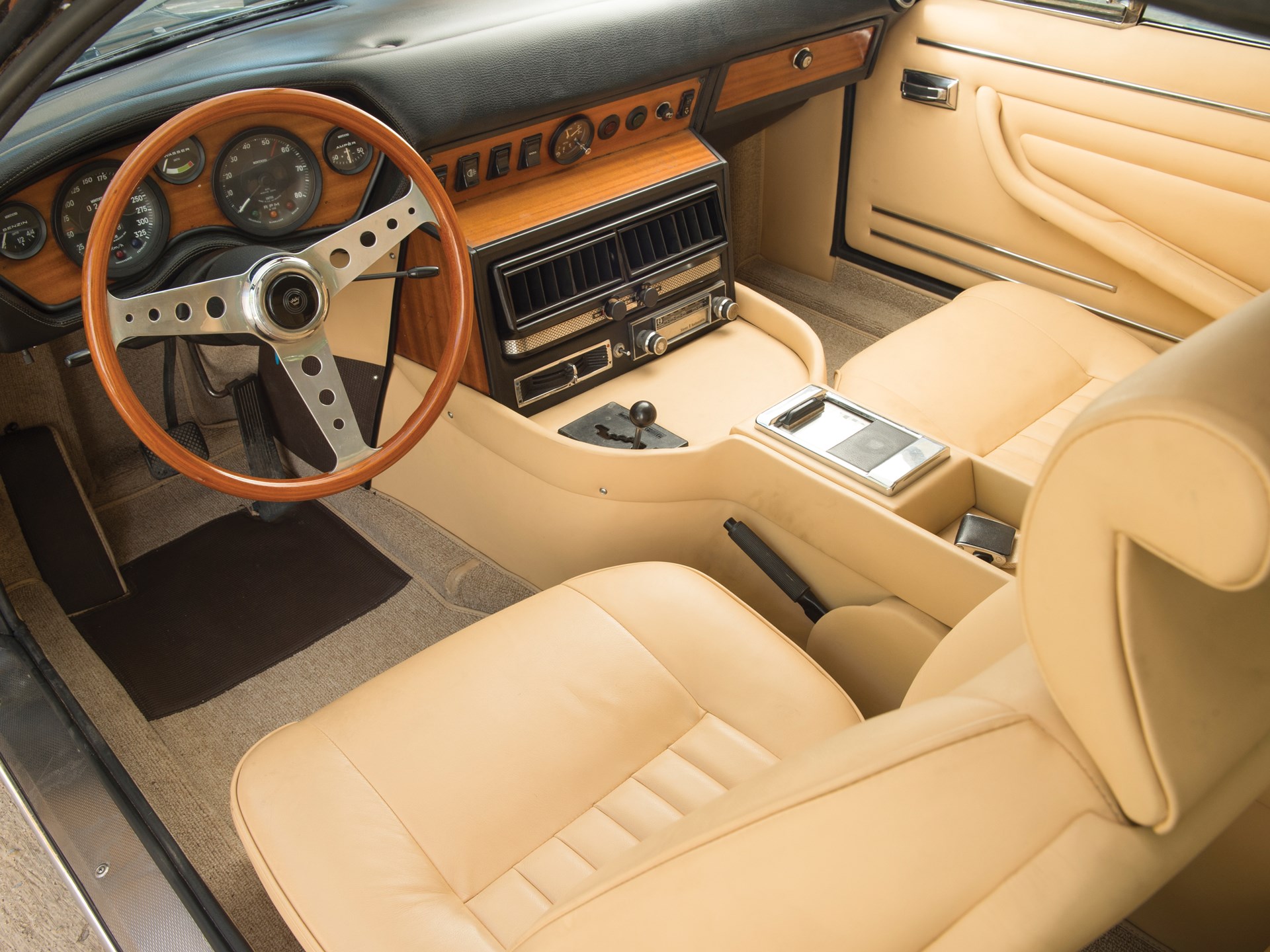
Most cars were ordered with the Chrysler Torqueflite three speed automatic transmission although manual transmission options were also offered. Customers for the Monteverdi High Speed cars were generally people who were looking for a prestigious and high quality long distance touring car rather than a raw high performance car that behaves like it would rather be on a race track than a public road.
Performance of the High Speed 375 L fitted with the 7.2 litre Chrysler V8, as tested by German magazine Auto Motor und Sport, found that their test car made a top speed of 229.3 km/h (142.5 mph) and a standing to 100 km/hr (62 mph) in 8.2 seconds. Perfect for a long distance luxury touring car.
High Speed 375 S
Peter Monteverdi, being an ex-racing driver and racing car constructor, remained keen to continue to create high performance versions of his High Speed series so as the production line at Fissore was established he returned to his first concept – a strictly two-seater high performance sports car.
This car, the High Speed 375 S, was built on the original slightly shorter chassis and was to be offered with the 7.2 litre Chrysler V8 or the more powerful motorsport oriented 7.0 litre Hemi V8, which delivered a claimed 440 hp SAE in standard road car form and far more than that in race-car form.
The High Speed 375 S proved to be much less popular than the 2+2 375 L, the 2+2 being rather more suited for a family man or people wanting to use their car for road trips. Only six of these cars were made in the two year period between 1969-1971.
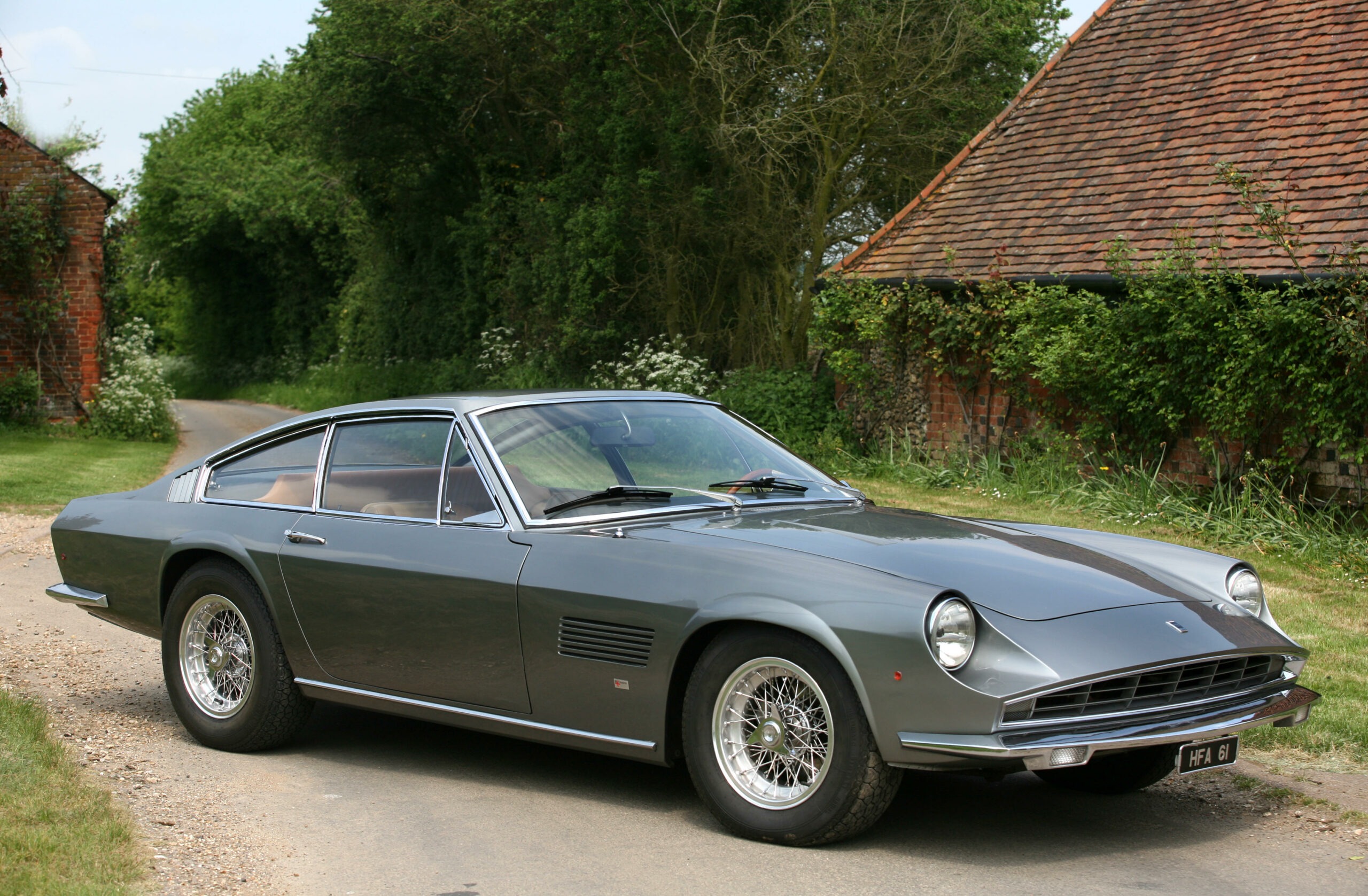
1970-1971 saw some significant design changes to the Monteverdi High Speed cars to create the Series II. The front end design was completely revised and given a more “droop-snout” with a low curved full width front grill. The double headlights were done away with and the car had single full sized headlights. The front turn indicator lights were set into the bumper while at the rear the triple round light groups were changed over to tail light clusters as used on the Alfa Romeo Giulia. These would be changed around 1972 on both the 375 S and 375 L to Triumph TR6 units which complimented the car’s revised styling beautifully.
These improvements were not limited to the styling. The frame of the car was also reinforced to improve not only its stiffness but also its crash protection for occupants, something that was an increasingly important feature of new car designs during this period of the mid-1960’s onward.
High Speed 375 C
In 1971 Peter Monteverdi decided to offer a convertible version of the High Speed and this was the 375 C. Like the other Series II cars the two convertible’s made featured the same body style with single headlights, front bumper mounted front turn indicators, and the Alfa Romeo Giulia rear tail light cluster.
A yellow painted 375 C was featured at the 1971 Geneva Auto Salon and was sold to a customer: this car was later re-purchased by Monteverdi and took its place in the Monteverdi Museum. The other car remained homeless and was later converted to become the Monteverdi Palm Beach Special.
High Speed 375/4
The last of the High Speed series of Monteverdi was the luxurious executive saloon: the 375/4, the “4” indicating four doors.
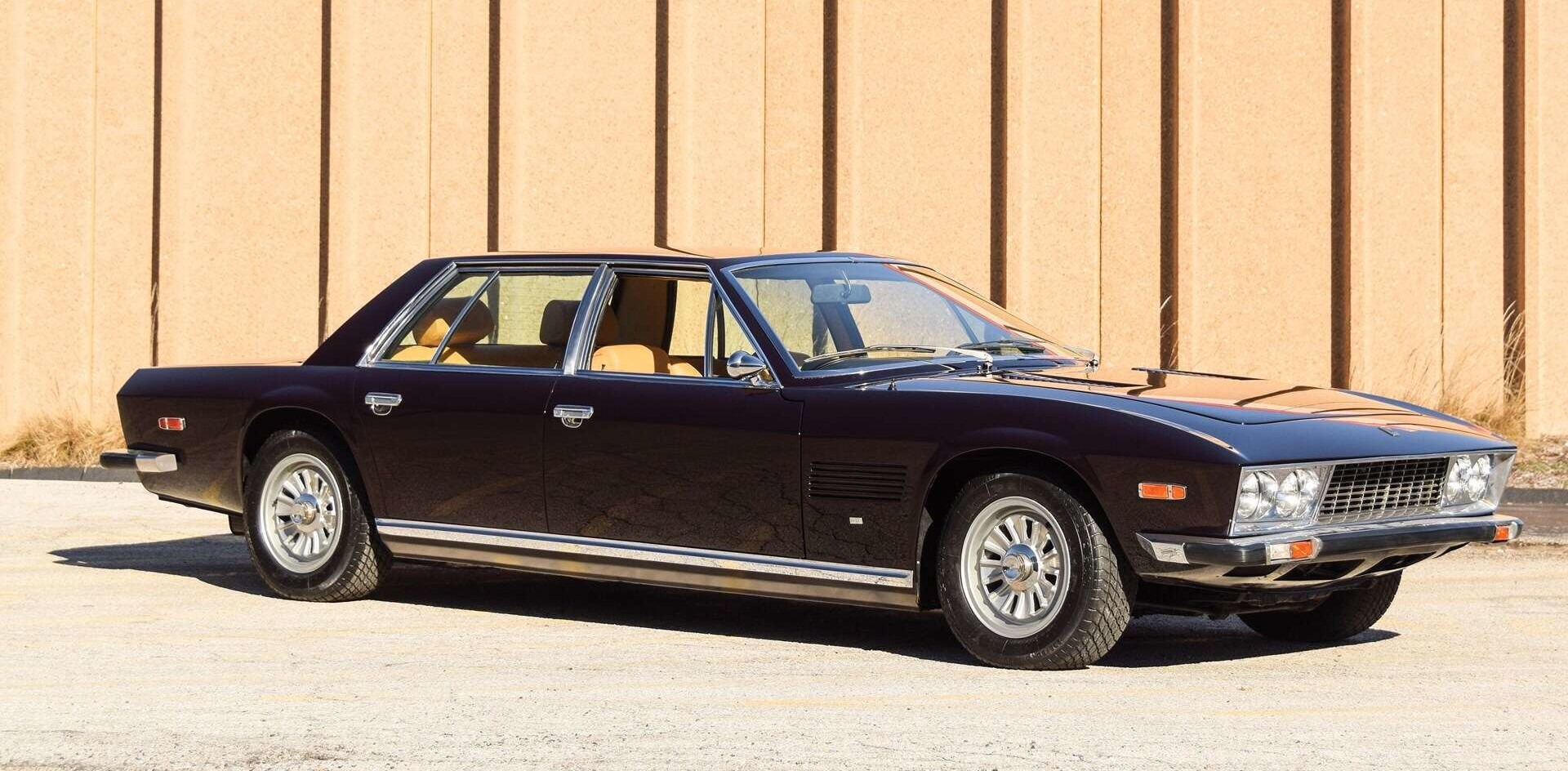
To create the 375/4 Monteverdi created a new longer version of their chassis. The engine, transmission and final drive were all able to be kept unchanged other than accommodating the additional length.
The 375/4 did not adopt the Series II revised styling, that was reserved for the two door sports oriented 375 S and 375 L. Instead the 375/4 kept the dignified Series I front styling complete with dual headlight clusters: it was essentially a 375 L Series I up to the “A” pillar and from there on Monteverdi created a large luxury four door car which had more than adequate performance and exemplary handling.
All the Monteverdi cars were hand built which enabled a great deal of bespoke customization to tailor each car to the customer’s requirements: and nowhere was this more evident than in the creation of the 375/4 cars. Some were built for an owner-driver, some for a buyer who employed a chauffeur which may have a glass partition between the rear passenger compartment and the driver’s area.
Just as a car such as a Rolls-Royce might have provision for the enjoyment of champagne and cigars so a 375/4 might be equipped, and for the person who wanted to watch television then that could be fitted also. Such a television would be rather primitive by today’s standards, this was the early 1970’s.
Exact production numbers are not known but it is believed that less than thirty 375/4 were built, a number making their way to the affluent of the Middle-East.
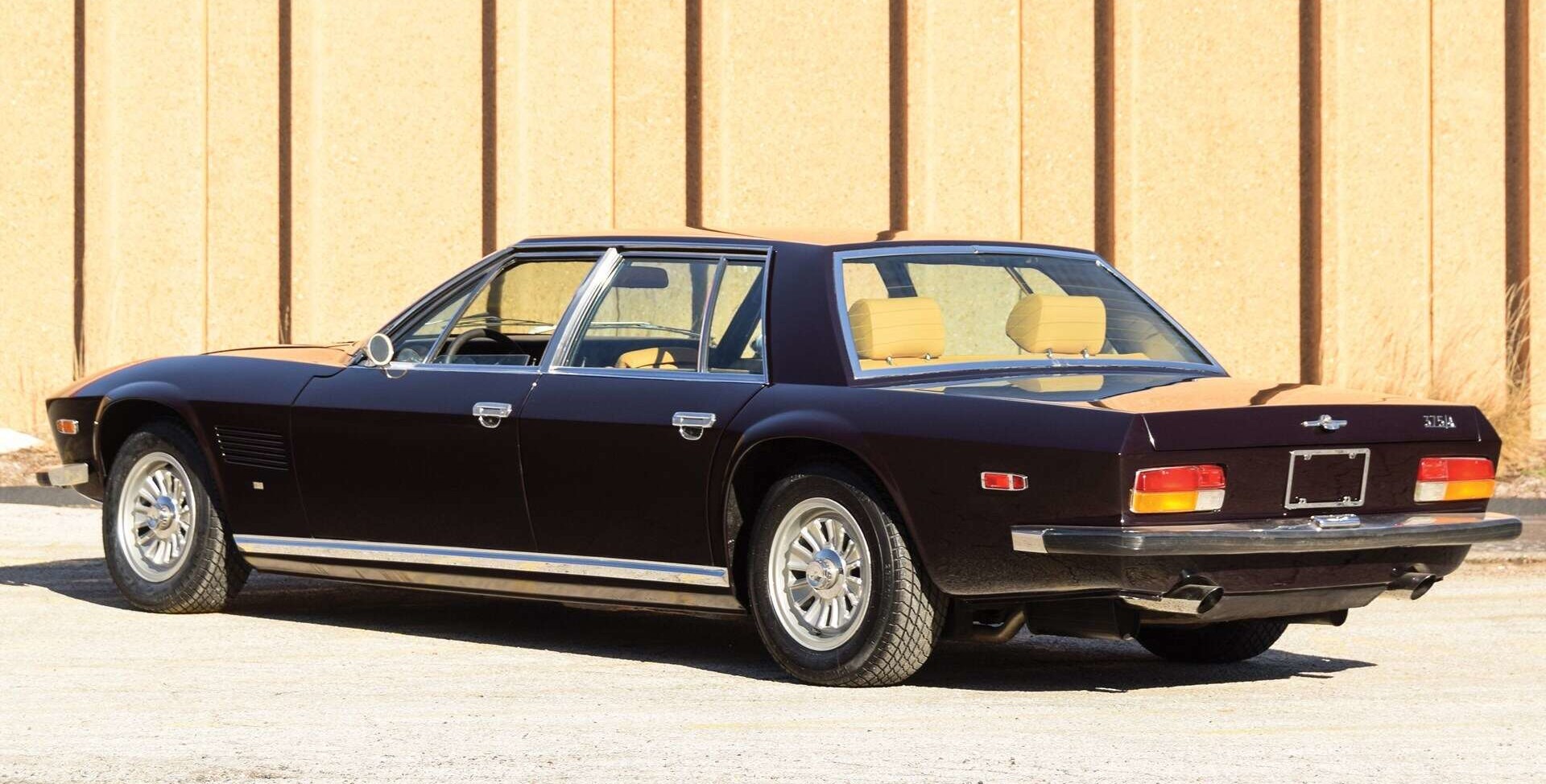
The End of the Monteverdi High Speed Era
An old saying claims that “All good things must come to an end”, and it was to be the end of inexpensive gasoline/petrol that was to herald the end of the Monteverdi High Speed series of luxury high performance cars.
In 1973 when Egypt and Syria launched a surprise attack on the nation of Israel, the Organization of Arab Petroleum Exporting Countries (OAPEC) imposed an embargo against nations which supported Israel. The affected nations were the United States, United Kingdom, Netherlands, Canada and Japan.
The result of this embargo was a dramatic strangulation of oil supply to the affected nations with fuel prices greatly increased and fuel supply greatly reduced.
The effect on Monteverdi was predictable, and sales of the 7.2 litre V8 powered performance cars dropped dramatically, resulting in the company deciding to bring to an end the making of their High Speed Grand Touring cars.
The additional influence was the increasing regulation of car design and construction standards, exhaust emissions, and safety requirements. These things were to strangle small specialist car makers out of business and the Monteverdi High Speed cars were to be among those that had to end production.
This took effect in 1976.
Peter Monteverdi’s High Speed 375 cars are relatively unknown even among performance car enthusiasts, but Monteverdi’s cars are some of the most desirable performance cars to emerge from the creative 1960’s and 1970’s.
They stand as a fitting memorial to a man who built his first car at the age of eighteen.
Jay Leno has a Monteverdi High Speed 375 S Series II in his collection. In this video he summarizes the car’s history and features.
Picture Credits: All pictures as individually credited. Feature Image at the head of this post courtesy Bonhams.

Jon Branch is the founder and senior editor of Revivaler and has written a significant number of articles for various publications including official Buying Guides for eBay, classic car articles for Hagerty, magazine articles for both the Australian Shooters Journal and the Australian Shooter, and he’s a long time contributor to Silodrome.
Jon has done radio, television, magazine and newspaper interviews on various issues, and has traveled extensively, having lived in Britain, Australia, China and Hong Kong. His travels have taken him to Indonesia, Israel, Italy, Japan and a number of other countries. He has studied the Japanese sword arts and has a long history of involvement in the shooting sports, which has included authoring submissions to government on various firearms related issues and assisting in the design and establishment of shooting ranges.

